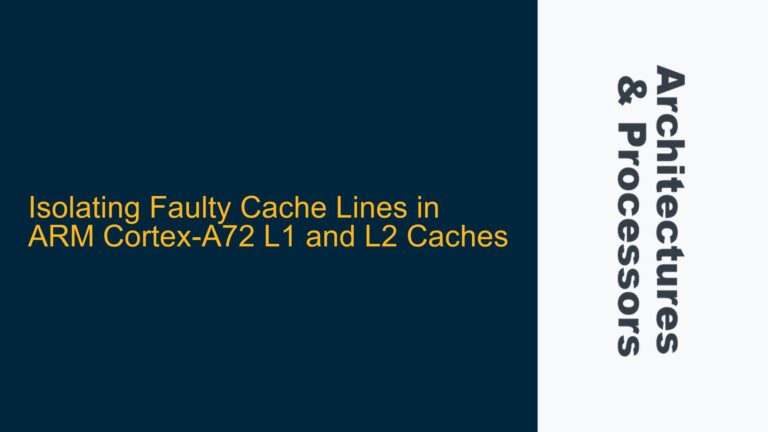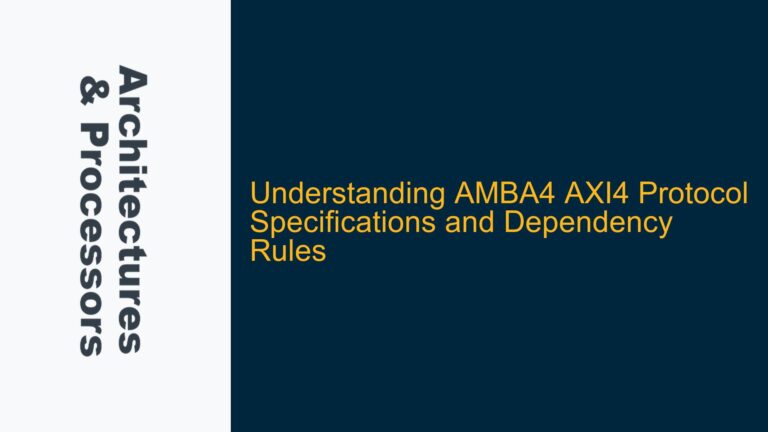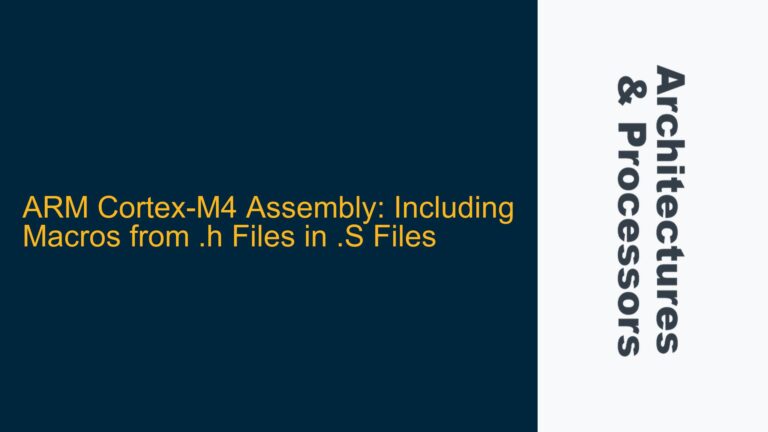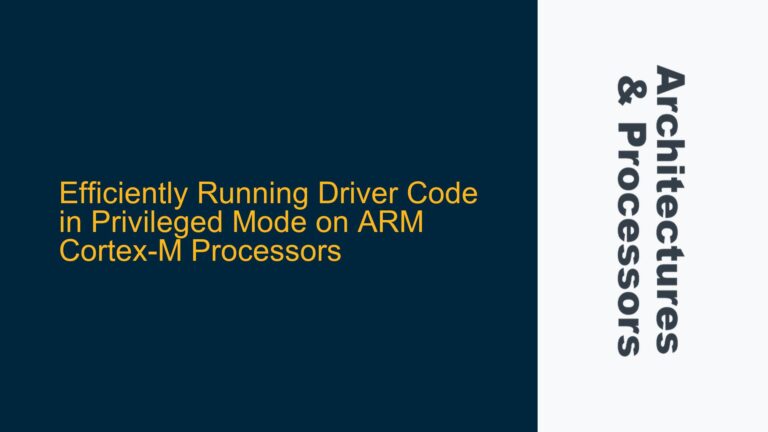ARMv7 Secure and Non-Secure Mode Stack Pointer Configuration
In ARMv7 architectures, the management of stack pointers (SP) in secure and non-secure modes is a critical aspect of system design, particularly when dealing with TrustZone technology. TrustZone introduces a hardware-based security extension that partitions the system into secure and non-secure worlds, each with its own set of resources, including stack pointers. The ARMv7 architecture mandates that each mode, whether secure or non-secure, maintains its own stack pointer. This separation ensures that secure and non-secure states do not inadvertently corrupt each other’s stack memory, which could lead to security vulnerabilities or system instability.
The ARMv7 architecture defines several processor modes, including User, FIQ, IRQ, Supervisor, Abort, Undefined, and System modes. Each of these modes can operate in either secure or non-secure states, depending on the configuration of the system. The stack pointer (SP) is a register that holds the address of the top of the stack for the current mode. In ARMv7, the stack pointer is banked, meaning that each mode has its own dedicated SP register. This banking is essential for maintaining the integrity of the stack across mode switches, especially when transitioning between secure and non-secure states.
When the processor switches from secure to non-secure mode, or vice versa, the stack pointer must be explicitly saved and restored to ensure that the stack for the new mode is correctly set up. This is particularly important in systems where secure and non-secure worlds share the same physical memory but are logically separated by TrustZone. The secure world typically handles sensitive operations, such as cryptographic key management, while the non-secure world runs the general-purpose operating system and applications. The separation of stack pointers ensures that sensitive data in the secure world’s stack is not exposed to the non-secure world.
In addition to the stack pointer, other processor registers, such as the program counter (PC), link register (LR), and general-purpose registers (R0-R12), are also banked or shared between secure and non-secure modes. However, the stack pointer is unique in that it directly controls the memory region used for temporary data storage during function calls and interrupts. Misconfiguration or improper management of the stack pointer can lead to stack corruption, which can be difficult to diagnose and may result in system crashes or security breaches.
The ARMv7 architecture provides several mechanisms for managing stack pointers during mode switches. These include the use of the Monitor mode, which is a special mode that facilitates transitions between secure and non-secure states. The Monitor mode has its own stack pointer, which is used exclusively during these transitions. When a secure monitor call (SMC) instruction is executed, the processor switches to Monitor mode, and the current stack pointer is saved. The Monitor mode then sets up the stack pointer for the target state (secure or non-secure) before transferring control to the new mode.
In summary, the ARMv7 architecture requires that each mode, whether secure or non-secure, maintains its own stack pointer. This separation is crucial for ensuring the integrity and security of the system, particularly in TrustZone-enabled systems. Proper management of stack pointers during mode switches is essential for preventing stack corruption and ensuring reliable operation of the system.
Shared General-Purpose Registers and Context Switching Overheads
While the stack pointer is banked between secure and non-secure modes in ARMv7, most general-purpose registers (GPRs) are shared across these states. This sharing introduces complexities in context switching, particularly when transitioning between secure and non-secure worlds. The ARMv7 architecture defines a set of GPRs (R0-R12) that are common to both secure and non-secure modes. These registers are not banked, meaning that their contents are preserved across mode switches unless explicitly saved and restored.
The sharing of GPRs between secure and non-secure modes has significant implications for context switching. When the processor switches from secure to non-secure mode, or vice versa, the contents of the GPRs must be saved to memory to prevent corruption. This is typically done by pushing the registers onto the stack or saving them to a dedicated memory region. The saved registers are then restored when the processor returns to the original mode. This process adds overhead to context switching, as it involves additional memory accesses and increases the latency of mode transitions.
The ARMv7 architecture provides several mechanisms to optimize context switching between secure and non-secure modes. One such mechanism is the use of the Secure Monitor Call (SMC) instruction, which triggers a switch to Monitor mode. In Monitor mode, the processor can save the current state of the GPRs and set up the stack pointer for the target mode before transferring control. The SMC instruction is often used in conjunction with the Secure Monitor Vector Table (SMVT), which contains the entry points for secure monitor routines.
Another optimization technique is the use of lazy context switching, where the processor delays saving and restoring GPRs until they are actually modified. This approach reduces the overhead of context switching by minimizing the number of memory accesses required. However, lazy context switching introduces additional complexity, as the processor must track which registers have been modified and ensure that they are saved and restored correctly.
The sharing of GPRs between secure and non-secure modes also has implications for interrupt handling. When an interrupt occurs, the processor switches to the appropriate mode (secure or non-secure) to handle the interrupt. During this switch, the contents of the GPRs must be saved to prevent corruption. The ARMv7 architecture provides dedicated interrupt modes (IRQ and FIQ) that have their own banked registers, including the stack pointer. However, the GPRs are still shared, and their contents must be saved and restored during interrupt handling.
In summary, the sharing of GPRs between secure and non-secure modes in ARMv7 introduces complexities in context switching and interrupt handling. Proper management of these registers is essential for ensuring the integrity and performance of the system. Techniques such as lazy context switching and the use of SMC instructions can help optimize context switching overheads, but they require careful implementation to avoid introducing security vulnerabilities or system instability.
Implementing Secure and Non-Secure Stack Pointer Management in ARMv7
Implementing secure and non-secure stack pointer management in ARMv7 requires a thorough understanding of the architecture’s stack pointer banking and context switching mechanisms. The following steps outline the process for setting up and managing stack pointers in a TrustZone-enabled ARMv7 system:
-
Initialization of Stack Pointers: During system initialization, the stack pointers for all modes (secure and non-secure) must be set up. This involves allocating memory regions for the stacks and initializing the SP registers for each mode. The stack pointers should be configured to point to the top of their respective stack regions, ensuring that they have sufficient space for function calls and interrupt handling.
-
Context Switching Between Secure and Non-Secure Modes: When transitioning between secure and non-secure modes, the current stack pointer must be saved and the stack pointer for the target mode must be restored. This is typically done in Monitor mode, which has its own stack pointer and is responsible for managing transitions between secure and non-secure states. The SMC instruction is used to trigger a switch to Monitor mode, where the stack pointers are saved and restored as part of the context switching process.
-
Interrupt Handling: During interrupt handling, the processor switches to the appropriate mode (secure or non-secure) to handle the interrupt. The stack pointer for the interrupt mode must be set up correctly to ensure that the interrupt handler has access to a valid stack. The contents of the GPRs must also be saved and restored to prevent corruption during the interrupt handling process.
-
Stack Pointer Management in Multi-threaded Environments: In multi-threaded environments, each thread typically has its own stack. The stack pointers for each thread must be managed carefully to ensure that they do not interfere with each other. This involves setting up separate stack regions for each thread and initializing the SP registers accordingly. Context switching between threads must also include saving and restoring the stack pointers to ensure that each thread has access to its own stack.
-
Debugging and Diagnostics: Proper management of stack pointers is essential for debugging and diagnostics. Stack corruption can be difficult to diagnose and may result in system crashes or security vulnerabilities. Tools such as stack canaries and memory protection units (MPUs) can be used to detect and prevent stack corruption. Additionally, logging and tracing mechanisms can be used to monitor stack usage and identify potential issues.
In summary, implementing secure and non-secure stack pointer management in ARMv7 requires careful initialization, context switching, interrupt handling, and debugging. Proper management of stack pointers is essential for ensuring the integrity and security of the system, particularly in TrustZone-enabled systems. By following the steps outlined above, developers can ensure that their ARMv7 systems are robust, secure, and performant.






